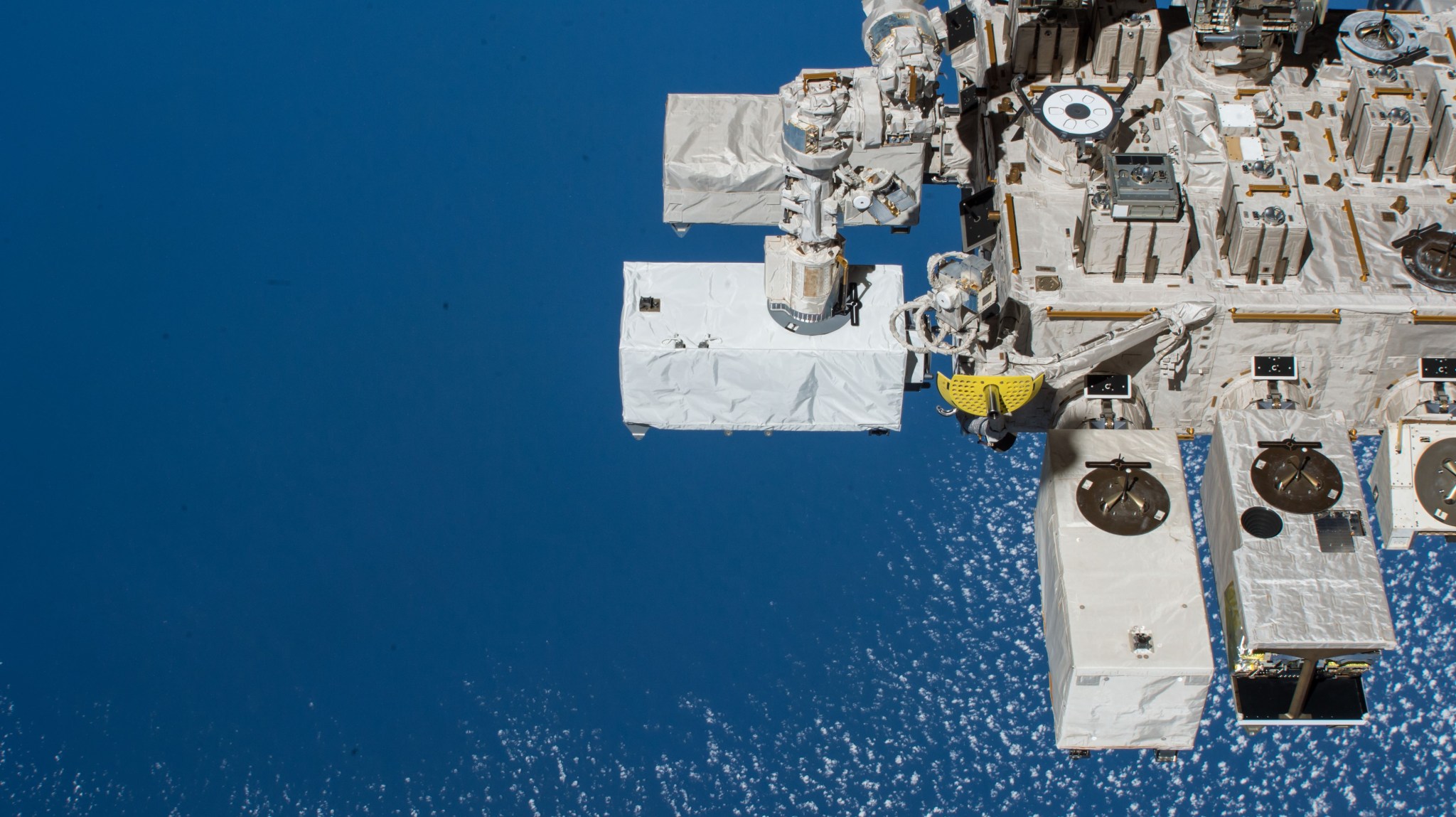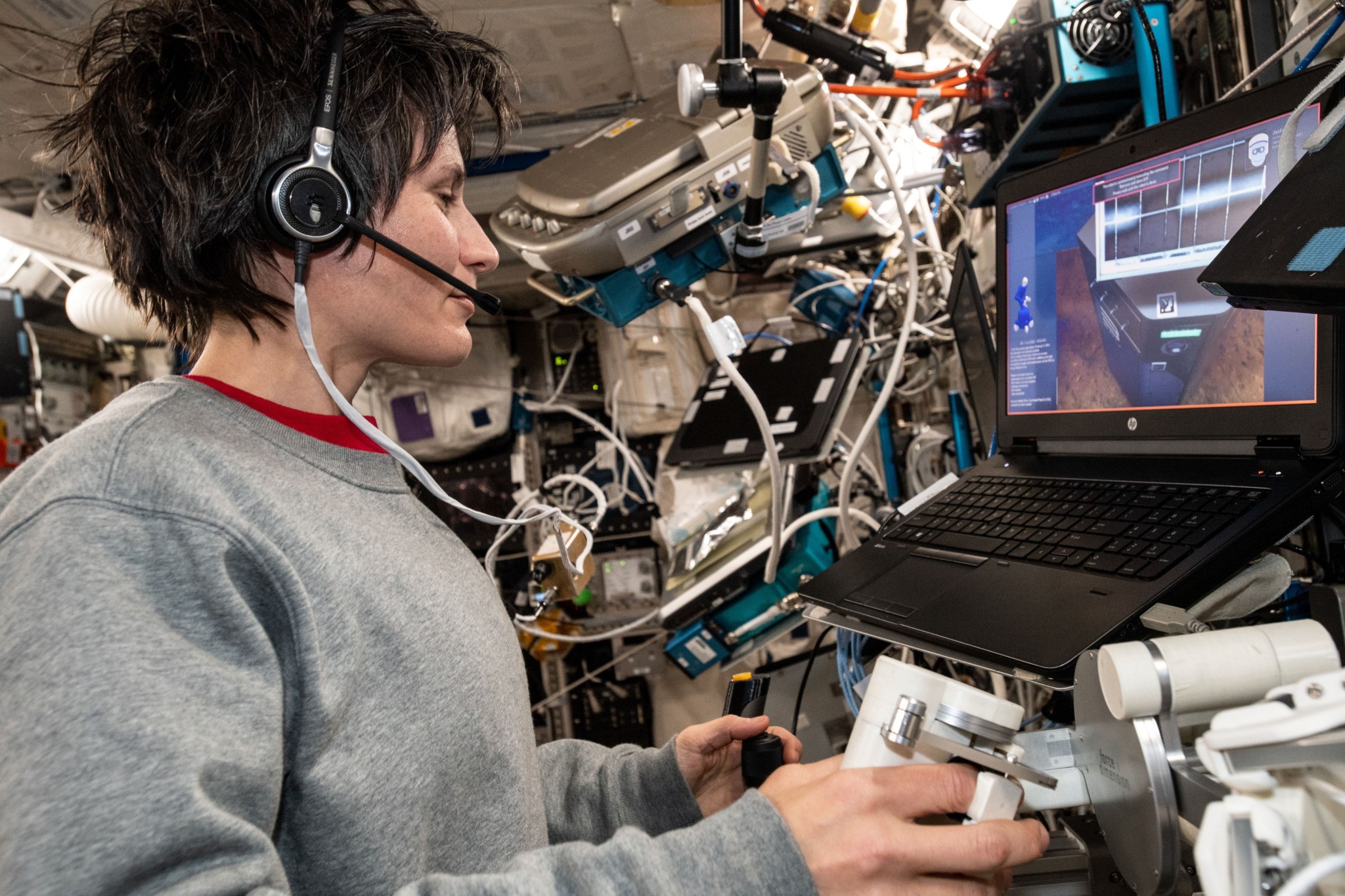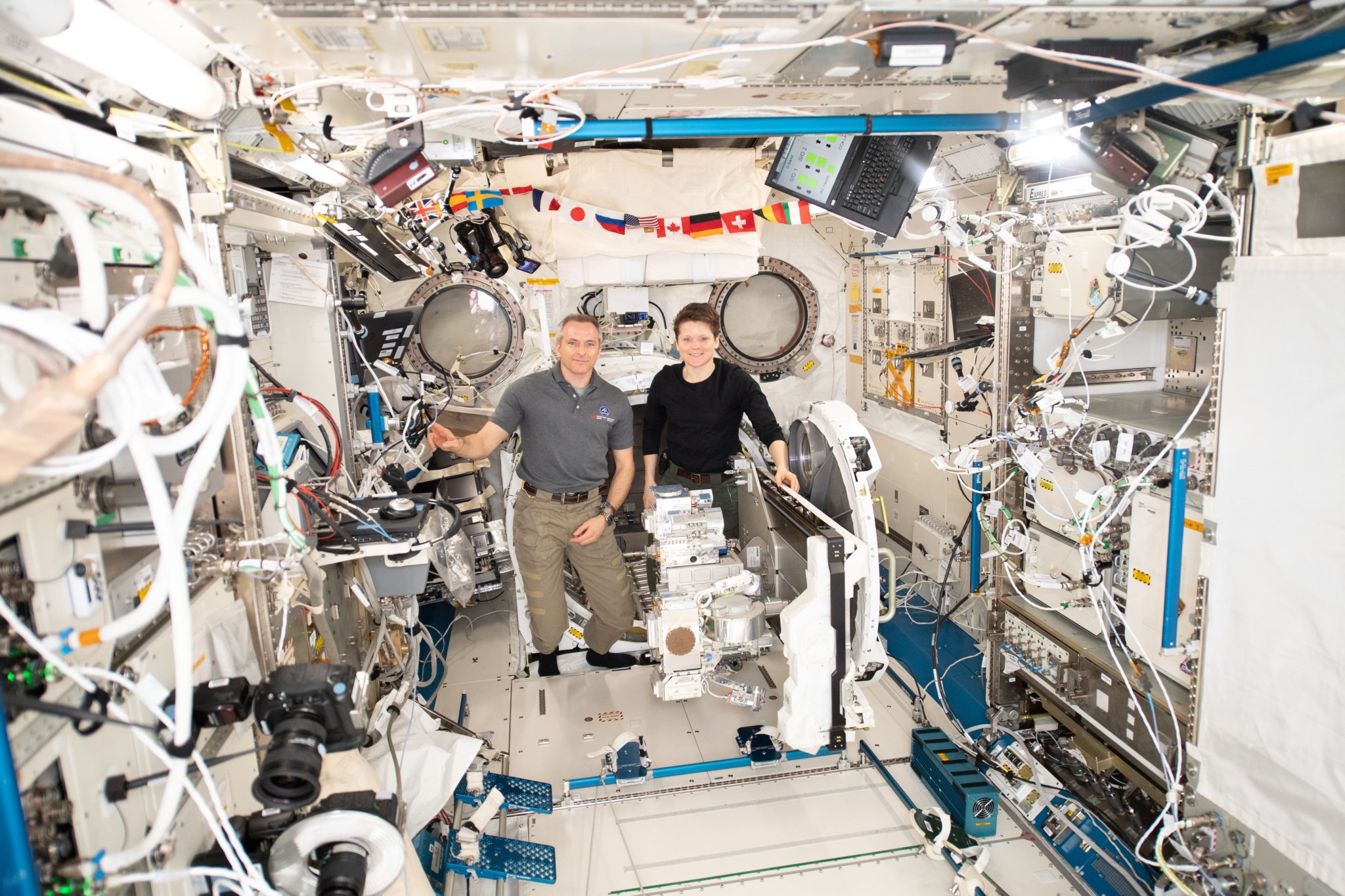Measuring water loss from space
This study showed that the International Space Station's ECOSTRESS instrument estimates of evapotranspiration (transfer of water to the atmosphere from Earth's surface and plants) are comparable to ground-based reference values. This finding suggests space measurements could provide guidance for improved water management on large scales.
Worsening droughts due to climate change require better water management. Evapotranspiration is a critical part of the hydrologic cycle, but data are lacking on local water conditions and demands. California's Eastern Municipal Water District uses the ground-based California Irrigation Management Information System to track evapotranspiration, but it has limited spatial coverage and consistency. Space-based estimates could be better and more consistent.

Four-legged robotic retrievers
Space station crew members successfully located and retrieved an object in a simulated Mars environment using a remotely controlled four-legged robot, Bert. Legged robots could provide the ability to explore and survey different extraterrestrial surfaces on future missions.
On uneven lunar and planetary surfaces, robots with legs could explore areas inaccessible to wheeled rovers. Surface Avatar, an investigation from ESA (European Space Agency), evaluated remote control of multiple robots in space, providing information on how human operators respond to physical feedback (such as feeling a bump when a robot arm makes contact) and identifying challenges for orbit-to-ground remote operation of robots. The German Aerospace Center is developing Bert.

Technology supports atmospheric studies
Researchers found that the Compact Thermal Imager (CTI) on the space station produced scientifically useful imagery of atmospheric phenomena, including gravity waves, clouds, and volcanic plumes. This technology could change current practices and instrument design for remote sensing of Earth from space.
The CTI is mounted on hardware for Robotic Refueling Mission 3, which tested technology for the robotic transfer and storage of cryogenic fluids in microgravity. The station's orbit provides near-global coverage and CTI has reduced size, energy use, and cost. Its images can measure fires, ice sheets, glaciers, and snow surface temperatures on the ground and the transfer of water from soil and plants into the atmosphere.







